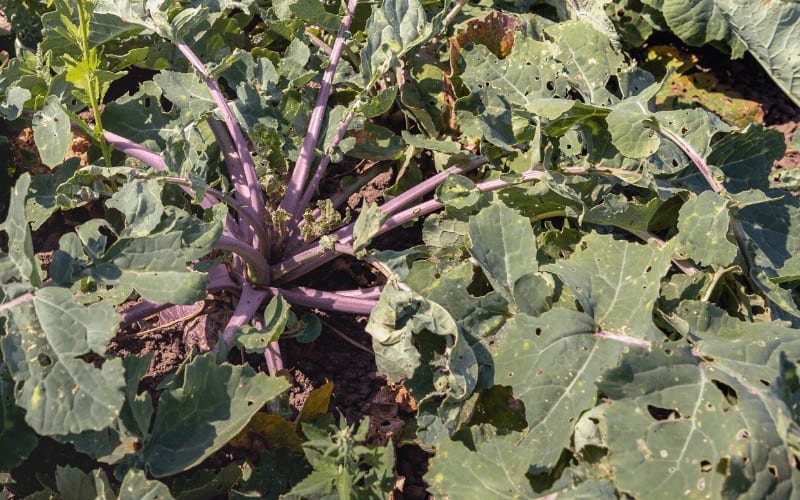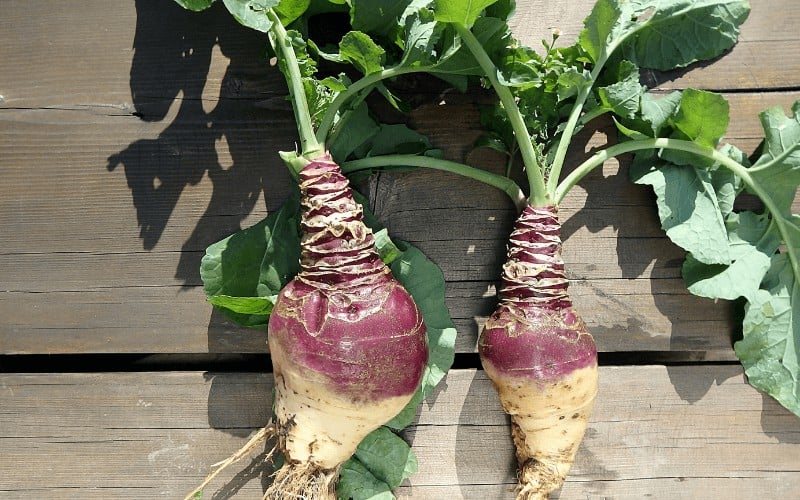Also known as swedes, rutabagas are root vegetables grown for both their golden root and their greens. The vegetable is recognized for its nutritional and tasteful potential.
More so, they are low in calories but high in fiber, making them the perfect vegetable to have in your garden.
While there are different ways of growing the rutabaga plant, we will be focusing on how to grow rutabaga from scraps. Rutabaga is easily grown from scraps with a retained top and an excellent big pot.
Growing rutabaga from scraps is a perfect way to save money when starting a very new vegetable plot.
If you are a few steps away from growing rutabaga in your garden, this post will guide you with the process.
Table of Contents
How to Grow Rutabaga From Scraps
It is interesting to find out that the way you use in growing root vegetables will have similar methods of growing rutabaga.
But there are many things to be on the look for since you are growing rutabaga from scraps.
1. Retaining the top
The first thing to do is to retain the top since it is the side that the vegetable will usually grow from.
If the scrap vegetable does not contain the top, then there is no need to plant the root vegetable since it will not sprout out leaves. The top is that part where leaves and stems join on to the root.
2. Place It In A Container
The rutabaga should be placed in a big container of water and watch it grow within days. Since rutabaga usually grows larger than turnips, planting rutabaga in a pot is not advisable as it will not give it room for growth.
So when planting, place it in a large pot filled with loose wet soil and, in circumstance, allow the soil to dry out completely to avoid the roots split due to varying moisture levels.
You can simply harvest and use rutabaga vegetables as they grow, or you can allow the roots to continue growing until the plants are ready to be transplanted back into the ground.
3. Transplant To The Ground
Germination takes about 7 to 10 days, and the harvesting period takes 80 to 100 days.
When rutabaga begins to grow and get bigger than the pot, you must transplant the root rutabaga from the pot to the ground to give it room for growth.
While planting, it is okay to leave about 8 to 10 inches of space between them.
Best Variety Of Rutabaga Plants To Grow From Scraps

There are many varieties of the Rutabaga plant, but primarily, you want a rutabaga plant that will grow quickly with little care. Some of the best varieties are:
1. American Purple Top
This variety has a slightly deeper purple crown than other rutabaga varieties. The American purple top is yellow, and it has sweet, firm flesh that turns orange when it is cooked.
2. Laurentian
This variety shares many similarities with the 'American Purple Top,' but the root might be smaller.
Problems With Growing Rutabaga From Scraps
You might have gotten back pains to form digging holes to plant your root vegetable, watching over them all summer, and doing the best you can to keep weeds away from your rutabaga plant.
Yet during harvest, all your rutabaga are nothing to write home about. Some of the problems that are faced while growing rutabaga are:
1. Too Acidic Or Alkaline Soil
A soil test kit or the portable meter will help you determine your soil's current pH level. Rutabaga does best with slightly acid soil, which will register in the 6.0 to about 6.89 range on the pH test.
To lower this pH if the soil is neutral to acidic, use 1 pound of sulfur per 100 square feet of the garden plot for every one point you need to lower it.
To improve a very acid soil, add 5 pounds of limestone for each point; you need to raise it in a 100 square foot area because it takes several months to raise or lower pH.
2. Poor Sun And Water
Most gardeners make the mistake of thinking that because most rutabaga grows under the earth, the amount of sunlight they get does not matter.
Sunlight is essential because it allows the plants' above-ground foliage to convert sunlight into fuel for growing healthier and bigger root vegetables.
In general, rutabaga needs an average of 4 hours of sunlight per day. It is also important to water deeply enough to reach the soil depths required by root vegetables instead of shallow roots.
3. Imbalance In Nutrient Composition
A comprehensive soil test kit not only enables you to determine the soil's pH level but the nitrogen, phosphorus, and potassium (NPK) content as well.
Root vegetables need a balance of nutrients, which are best added to the soil on planting day.
Too much nitrogen can lead to vigorous above-the-ground foliage growth at the expense of the roots themselves. At the same time, a lack of phosphate, which is necessary for root production.
How To Care For Rutabaga Plant

We are sure you want your rutabaga plant healthy. Rutabagas are not generally demanding plants to grow, but you must take specific steps to ensure a flourishing rutabaga plant.
Rutabaga thrives better on enriched soil. Applying some fertilizer or composted manure a few weeks after seeding will go a long way in keeping your plant healthy.
Planting rutabaga with other plants like kale, cabbage, and mustard greens can inhibit your rutabaga growth. If you want a companion plant for your rutabaga, onions or climbing peas are excellent options.
The soil needs to stay evenly moist but not waterlogged. Water your rutabaga plant at a rate of 1 to 1-½ inches per week. Watering is most important as the roots reach maturity.
To retain moisture, you will need to mulch the leaves heavily when they are a few inches tall. Mulching also helps keep down weeds and prevents frost damage.
Common Pests That Affects Rutabaga Plants
Rutabagas have prickly hairs, which makes them quite inconvenient for pests and diseases.
You can still find some common pests like flea beetles, root maggots, aphids, and wireworms on your rutabaga plants, irrespective of this. Covering your plant with a lightweight row cover will take care of the pests.
Recommended Reading:
- Should You Remove Grass Before Mulching?
- How To Harvest Chives
- How To Grow Cauliflower From Scraps
- How To Grow Turnip Green From Scraps
- Companion Plants For Turnip Green
Conclusion
Remember that how to grow rutabaga from scraps requires you to take some necessary steps to take care of your plant, such as keeping the soil moist and mulching the leaves to retain moisture.
Growing rutabaga from scraps at home will save you a lot of money from your monthly grocery bill and utilizing the finance to fund other projects.
Do yourself a huge favor by growing fresh fruit and vegetables from your very own plot or kitchen.




